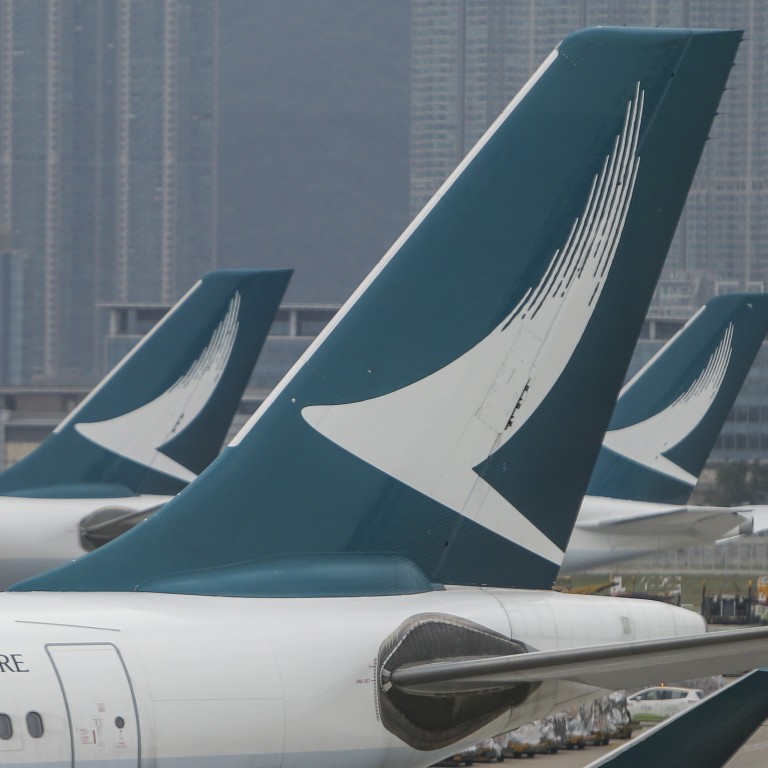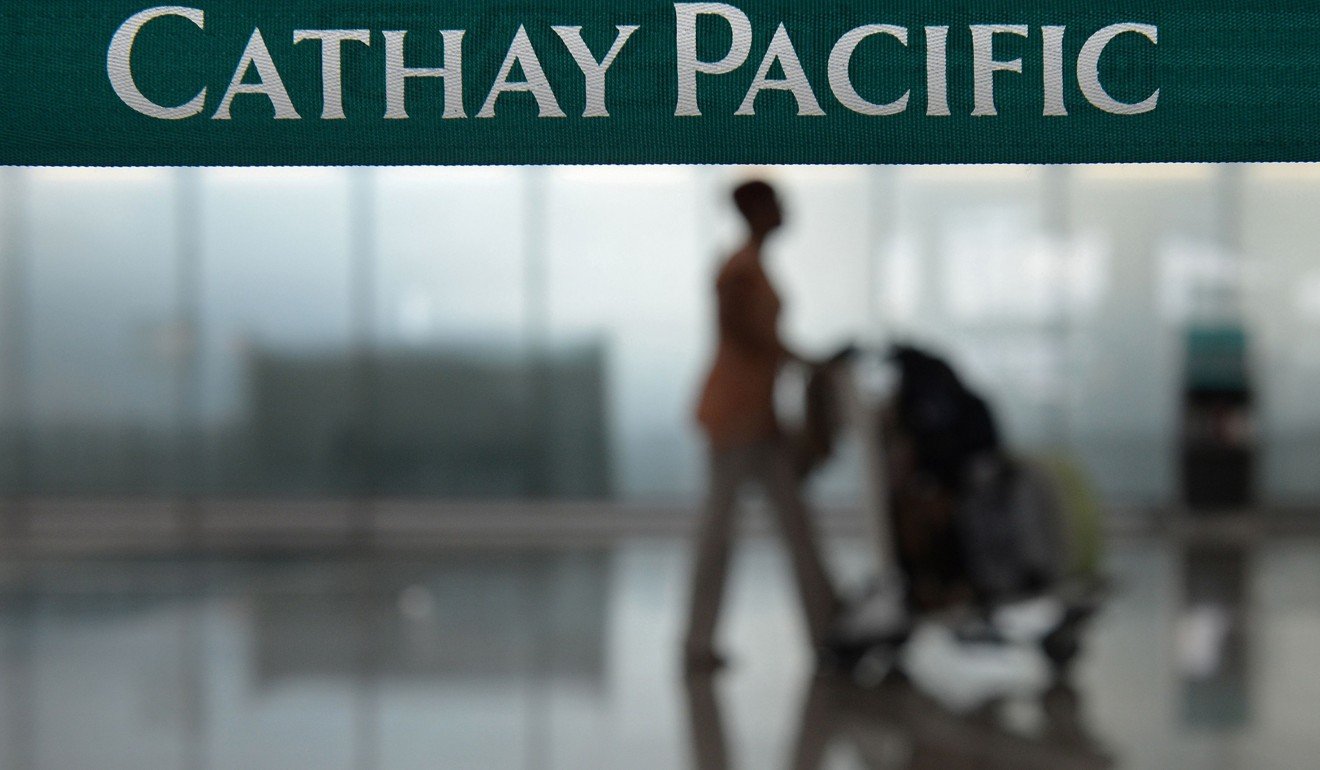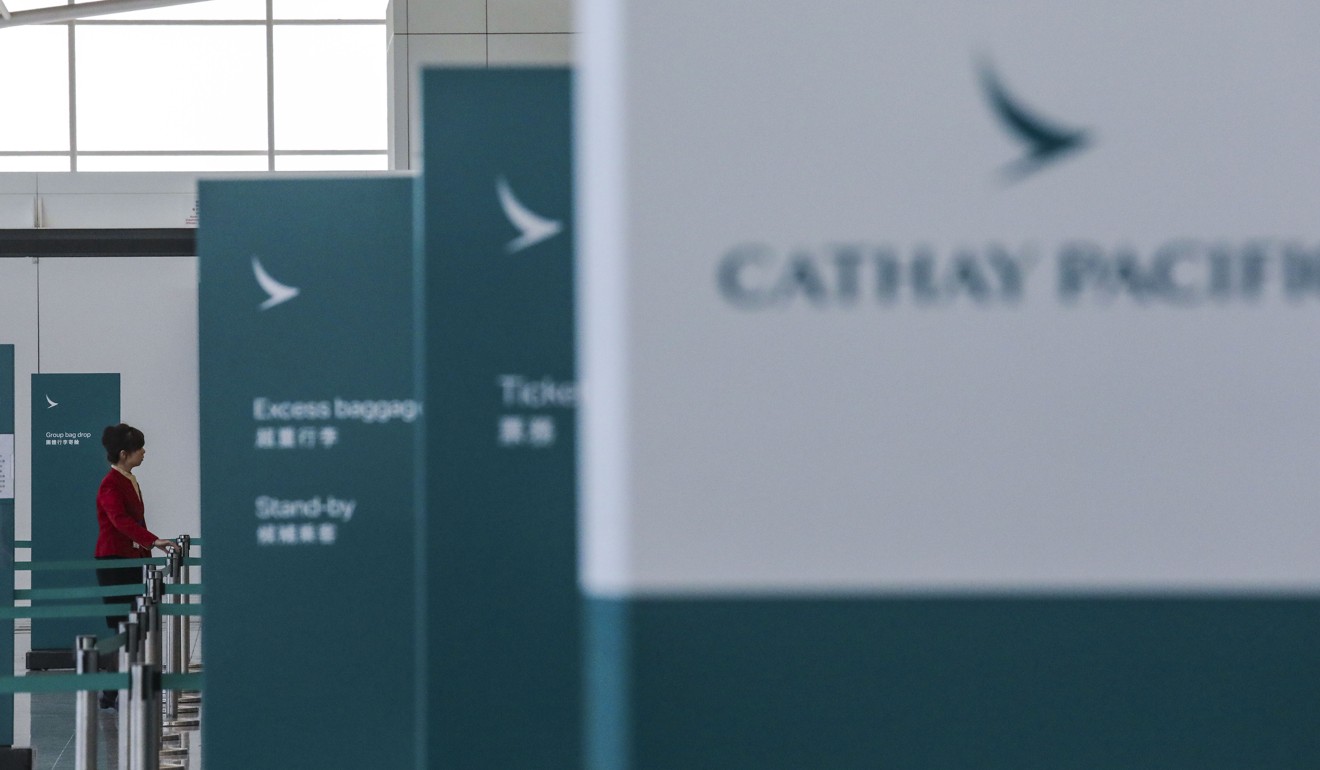
Hong Kong’s flagship airline Cathay Pacific to scale back its capacity by 1.4 per cent in 2020
- Cost control measures will be proportionate to the challenges the airline faces, internal memo sent out by CEO Augustus Tang says
- The airline last shrank its capacity in 2013 by 1.8 per cent
No routes will be cut outright, but cost control measures will be unveiled which will be “proportionate to the challenges we face”, according to an internal memo sent out to employees by the airline’s CEO Augustus Tang Kin-wing.
“This means further reductions in capacity will take place. These [will] include reductions in frequency to various destinations across all the regions where we fly,” Tang said.
This is the first time in six years that the airline is cutting back its capacity. The last cut of 1.8 per cent was carried out in 2013.
Hong Kong Airlines in crisis talks as existence hangs in balance
Tang added that the airline’s “position” had “deteriorated in recent weeks”, which justified swift action to address how much it spent into the next year.
Traffic from key markets, such as mainland China, and advance bookings into 2020 were “weaker than we would hope for”, he said.

Explaining why cutbacks on flights was necessary, he said: “We don’t believe we can continue to operate a full schedule profitably in the current market environment.”
“Put another way, rather than growing our airline in 2020 for the first time in a very long time, we will reduce in size.”
Luya You, transportation analyst at Bocom International, said: “Cathay has deemed it necessary to take a longer-term stance to address the current situation caused by the protests and a weak inbound demand.”
“Either they believe that Hong Kong’s demand slump will last longer than previously forecast, or they expect a slower recovery spread throughout 2020.”
Cathay Pacific swings axe in response to sharp drop in passenger numbers

Cathay Pacific said earlier this month that a prolonged impact from the protests would force it to ground planes, cut unprofitable routes, and put staff on unpaid leave.
However, the internal memo released on Friday stated that no routes would be cut and it would still take in new aircraft, while remaining flexible to make changes should the downturn worsen.
The airline earlier said it would delay the arrival of four new aircraft and speed up the retirement of two more planes as a countermeasure to the earlier effects of the protests. In total, the group will add 17 new aircraft and retire 10 next year.
Earlier this month, the airline issued its second profit warning in less than a month, saying profits would be “significantly below” its performance in the first half of the year – when it earned HK$1.34 billion.
Between August and October, passenger traffic at Hong Kong airport had fallen 2.3 million compared with the same period last year. Similarly, Cathay flew 770,000 fewer people year on year during the same period.

